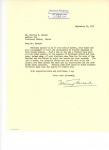Natural Partnerships with Three Summer Residents

Dedication of Joseph H. Curtis Memorial, Northeast Harbor, 1933
Mount Desert Island Historical Society
Among the earliest of the Boston rusticators to retreat to Mount Desert Island each summer was landscape engineer Joseph Henry Curtis (1841-1928). Curtis purchased 40 acres of land on the Eastern bank of Northeast Harbor, built three houses by the time of his death, and forged a close relationship with the Savage family through stays at Harbor Cottage during the 1880s. Curtis was also a regular at the Asticou Inn dining table, taking evening meals at the Asticou Inn many of the nights he was at his cottage until his death in 1928. Young Charles was no doubt friendly with the eccentric Curtis both at the Inn and on the hiking trails at Asticou. Upon Curtis's philanthropic bequest of all of his local property to the town of Mount Desert, Charles was appointed the sole trustee of Asticou Terraces Trust which oversaw the lands and their endowments and remained so until he resigned in 1965. Charles carried out Curtis's vision to preserve his hillside with trails and outlooks. The crowning jewel of Charles's partnership with Curtis resulted in the creation of the Thuya Garden in the late 1950s and a small library of rare botanical books for Thuya Lodge.

John D. Rockefeller Jr. letter to Charles K. Savage, Northeast Harbor, 1957
Mount Desert Island Historical Society
Charles's collaboration with John D. Rockefeller Jr. (1874-1960) started as members of the local church congregation in Northeast and Seal Harbors, perhaps as early as 1935. Charles carefully watched Mr. Rockefeller’s work on building the islands network of carriage roads. He saw in JDR, Jr., a kindred spirit who not only loved the natural, wild parts of the island but also could financially assist Charles in furthering his passion for many of the same things. The most public of their many collaborations resulted in the expansion of the Asticou Terraces Trust to include another 100 acres on Eliot Mountain and the unique design and completion of the Asticou Azalea Garden. Lesser known, perhaps, is the aforementioned 1953-54 story of Charles, boarding the overnight train for New York City, to enlist the support of JDR Jr. to stop logging on land near Lower Hadlock Pond and adjacent to Route 198 that culminated in the conservation in perpetuity along a two mile corridor of Route 198, extending from Brown Mountain gatehouse into the town of Northeast Harbor.

Correspondence, Beatrix Farrand to Charles K. Savage, Northeast Harbor, 1957
Mount Desert Island Historical Society
A third important friendship that Charles developed was with renowned landscape gardener and Bar Harbor summer resident Beatrix Farrand (1872-1959). The friendship of these two garden and landscape designers – one a highly trained patrician leader in an elite world, the other a self-taught and experimental Maine native – was a professional one.
When Ms. Farrand was converting her Reef Point estate into a horticultural research library and created a non-profit foundation, she asked Charles to be on her Board of Directors and included him in her annual meetings, correspondence, and planning. Through this association, Charles became more intimate with Farrand’s designs and in time, casually incorporated her ideas and principles into his own developing plans for the Thuya and Asticou Azalea gardens. When Reef Point was dismantled and the research center abandoned in 1956, Charles purchased many of the large plants at Reef Point (including the extensive collection of rhodora) and incorporated the Farrand collection into his visions for the Asticou pond area and the garden at the top of the Thuya property.
Charles was able to listen, support, and encourage these three Mount Desert island visionaries from away while they provided him with both financial and intellectual resources to expand his love of the native landscapes of the island, in particular those at his beloved Asticou. This meeting of the minds and tastes of island summer residents with Charles's dedication to detail have stood the test of time and left an enduring legacy of uninterrupted native beauty in Asticou.